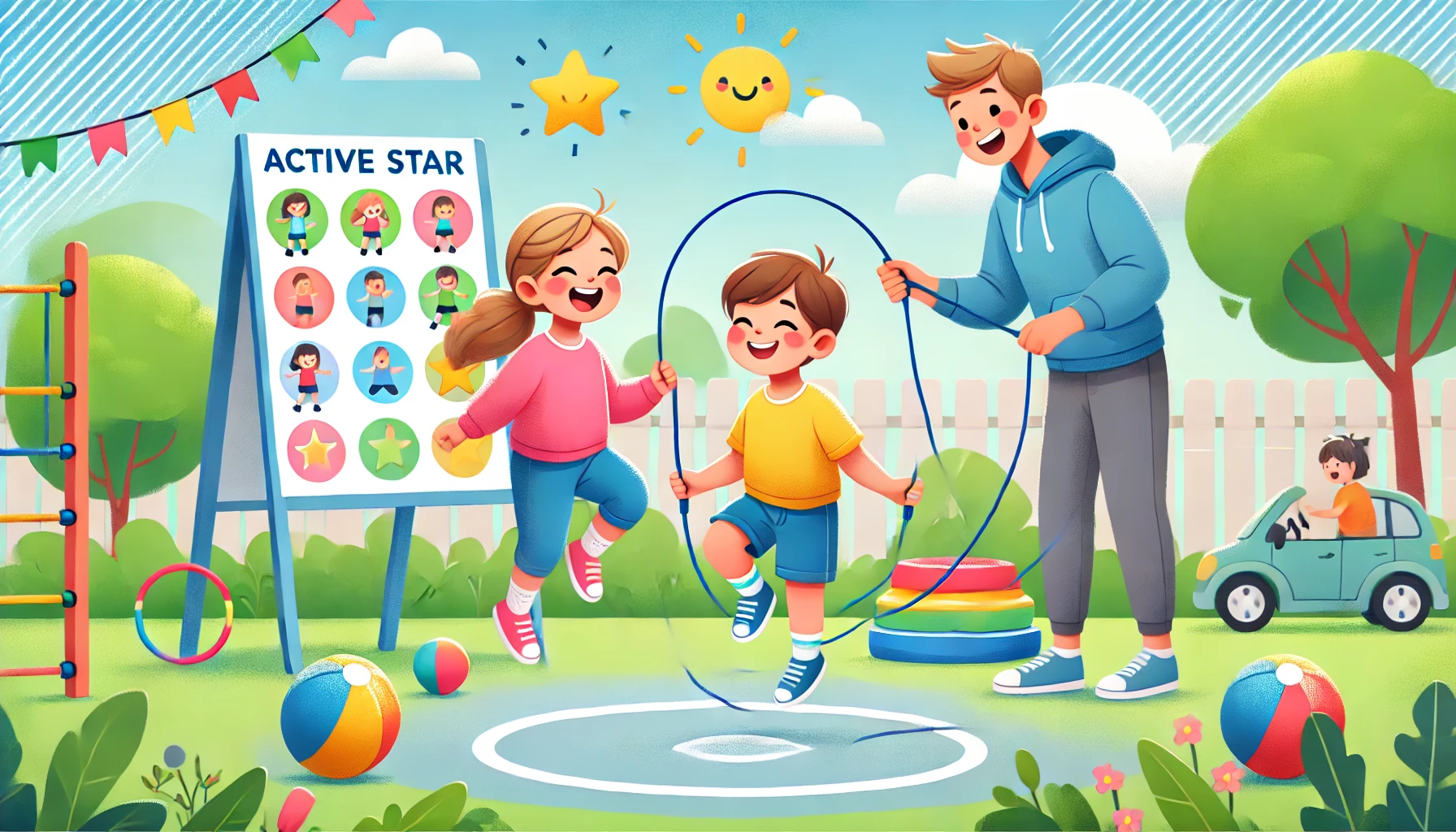How to Teach Young Children About Exercise and Staying Active
Helping children build a love for movement from an early age supports not only their physical health but also their emotional well-being and confidence. Exercise doesn’t have to mean structured workouts—active play, dancing, and outdoor adventures all count! When movement is fun and part of daily life, children grow strong, happy, and energized.
Why Teaching Active Habits Matters
- Supports healthy growth and motor development
- Improves mood and focus
- Builds strength, coordination, and balance
- Encourages lifelong healthy habits
- Boosts social skills through group play and teamwork
1. Explain Exercise in Fun, Simple Terms
Use playful language children can relate to.
Activity Idea:
- Say: “Exercise means moving your body to keep it strong and happy!”
- Show examples: jumping, running, dancing.
- Ask: “What’s your favorite way to move?”
What Kids Learn:
- That movement is joyful and healthy.
- How their body feels when they are active.
- Curiosity about different ways to exercise.
2. Make Movement Part of Everyday Play
Exercise doesn’t have to feel like a chore.
Activity Idea:
- Create obstacle courses at home or in the yard.
- Play movement games like “Simon Says” or “Freeze Dance.”
- Use toys like hula hoops, jump ropes, or soft balls.
What Kids Learn:
- Fun and playful ways to stay active.
- Gross motor skills development.
- Excitement for daily movement.
3. Use Music to Encourage Activity
Music is a natural motivator.
Activity Idea:
- Play energetic songs and have a dance party.
- Use rhythm games: clap, stomp, jump to the beat.
- Try action songs: “Head, Shoulders, Knees, and Toes.”
What Kids Learn:
- Coordination and rhythm.
- How movement and music go together.
- Joy in expressive movement.
4. Incorporate Movement into Learning
Combine exercise with learning moments.
Activity Idea:
- Hop while counting numbers.
- Act out animal movements: “Let’s slither like snakes!”
- Use letter or shape scavenger hunts around the house.
What Kids Learn:
- Physical and cognitive development.
- Multi-sensory learning.
- Engagement with both body and mind.
5. Get Outdoors Whenever Possible
Fresh air boosts movement motivation.
Activity Idea:
- Visit parks, nature trails, or your backyard for active exploration.
- Play classic games like tag, hide-and-seek, or follow the leader.
- Go for family walks or bike rides.
What Kids Learn:
- Appreciation for nature and outdoor play.
- Variety in physical activities.
- That exercise can be part of family time.
6. Celebrate Achievements in Movement
Reinforce progress and effort.
Activity Idea:
- Create an “Active Star” chart for fun activities completed.
- Praise: “You climbed the playset so well!”
- Reflect: “How did your body feel after running?”
What Kids Learn:
- Motivation through recognition.
- Positive self-awareness about their body.
- Confidence in physical abilities.
7. Be a Movement Role Model
Show them that staying active is a lifelong habit.
Activity Idea:
- Join in during playtime: dance, jump, and move together.
- Share your activities: “I love morning stretches because they wake me up!”
- Try family challenges: “Let’s see how many jumping jacks we can do!”
What Kids Learn:
- That exercise is fun for everyone, not just kids.
- Family bonding through shared activity.
- Long-term positive attitude toward exercise.
8. Introduce Relaxation and Body Awareness
Balance activity with rest.
Activity Idea:
- Try kid-friendly yoga poses or stretching.
- Practice deep breathing after play.
- Talk about how rest helps our bodies recover.
What Kids Learn:
- The importance of balance between activity and rest.
- Body awareness and mindfulness.
- Healthy relaxation techniques.
Final Thoughts
Teaching young children about exercise and staying active sets them on a path toward lifelong health and happiness. By making movement playful, natural, and joyful, you help children develop a positive relationship with their bodies. And with each jump, dance, and game, they build strength—not just in their muscles, but in their confidence and spirit too.
